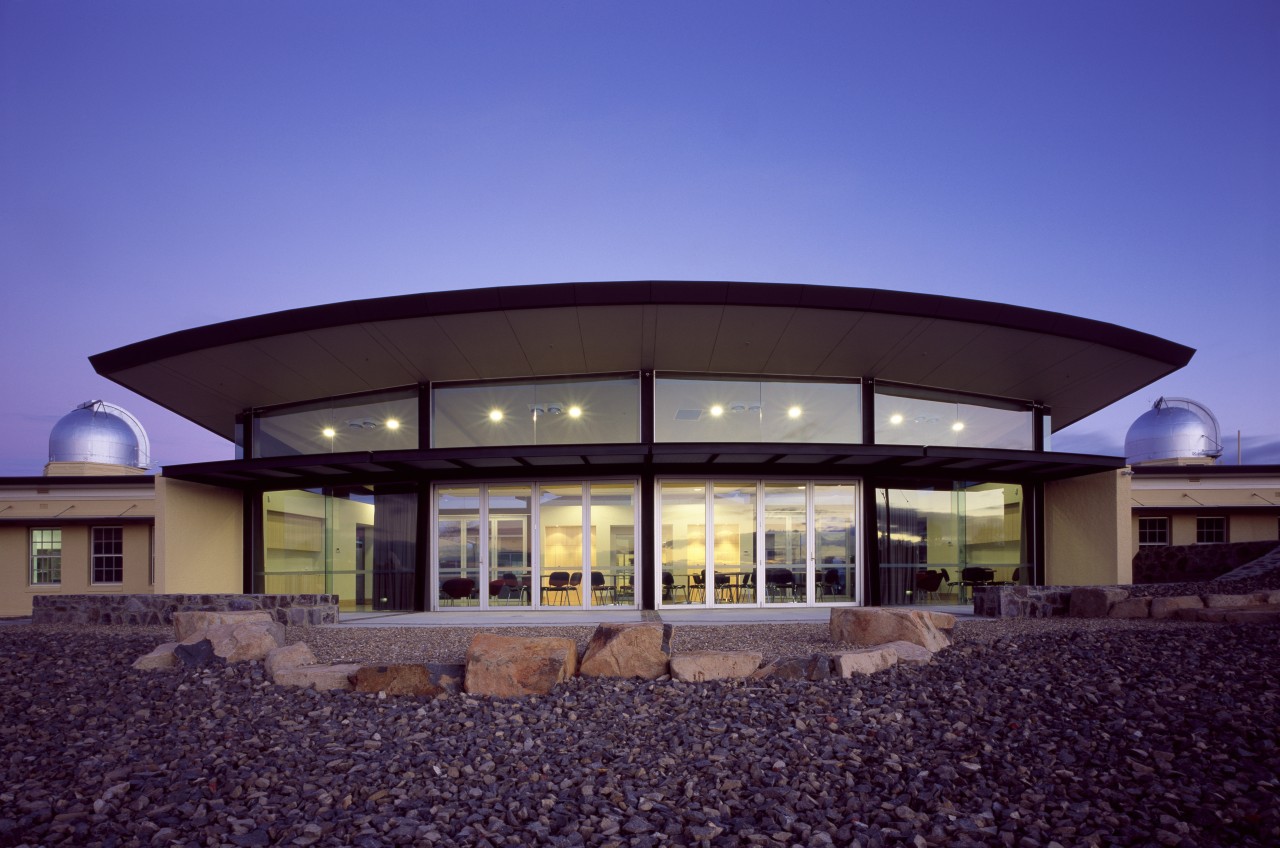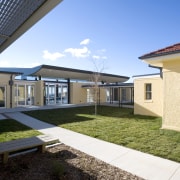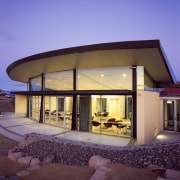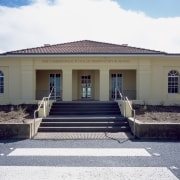Phoenix rising
Mount Stromlo Observatory, largely razed to the ground in Canberra's 2003 bushfires, has seen existing facades restored and a contemporary addition take centre stage
A classic renovation project is often well served by a bold, contemporary insertion. Restored traditional meets the strikingly new in this comprehensive rethink of the Mount Stromlo Observatory, home to the Research School of Astronomy and Astrophysics and part of the Australian National University.
The bushfires that devastated Canberra in January 2003 swept across Mount Stromlo, causing widespread destruction to the school's facilities. This included a number of historic telescopes and buildings. The observatory, established in the 1920s, is significant due to the history of scientific research undertaken on the site, and the fact that it is one of the oldest federal institutions in the ACT.
Following completion of a detailed conservation management plan for the whole observatory and its curtilage, Tanner Architects was commissioned for the reconstruction of the central Commonwealth Solar Observatory (CSO) Building. Robert Denton was project architect on the substantial undertaking.
"The CSO Building was originally designed by federal architect JS Murdoch and constructed in stages from 1925 through to 1940," says Denton. "The building consists of a series of pavilions arranged around two courtyards and joined by covered walkways. The bushfire almost completely destroyed the original building only the masonry walls and telescope domes were left standing."

A primary concept in the building's adaptive reuse was to restore the exterior to its general appearance before the fires, while providing contemporary, open and light-filled interior spaces suitable for the school's administrative and business functions. Where original walls were not reinstated in the reception pavilion and common room they are represented by contrasting timber floor elements that follow the original outline.
"The reconfigured building interior includes a generous reception area, office areas, meeting rooms, high technology resource library, amenities and a large common room," says Denton. "The once dark and cramped basement area was opened up through the provision of a new void and glazed stair wrapping around the original Sun telescope shaft, connecting the library areas with generous levels of natural light."
In addition, the CSO building was fully upgraded to meet current building codes, standards, accessibility requirements and bushfire protection. The building was provided with energy- and water-efficient services, rain water collection and discreet external sunshading.
"An important aspect of the project was the provision of a new and contemporary common room facility, taking advantage of expansive valley views and orientation," says the architect. "The common room replaces the original central north pavilion, which had been constructed as an expedient back-of-house structure with little consideration for maximising views to the mountain scenery, such as the modern structure affords."
The new addition has a prominent form, with an expressive roof, but does not dominate the existing telescope towers or the original building's presentation.
"The openness of the structure distinguishes it from the unaltered components, but integrates with the existing building through its symmetrical design and the use of common materials," says Denton. "This insertion provides a new focus for the school that is a further positive step from the devastation of the fire, and at the same time acknowledges the fire as an important event in the history of the building.
"The adaptive reuse has breathed life back into this important building, returning it to the administrative and social heart of the observatory, and reinstated the iconic status of the Mount Stromlo Observatory."
Credit list
Architect
Heritage architects
Project co-ordinator
Construction
Quantity surveyor
Building regulations consultant
Roofing
Floors
Office furniture
Pergolas and sunshades
Interior designer
Conservation management plan
Environmentally sustainable design
Civil, mechanical and electrical engineer
Landscaping
Cladding
Facade
Lighting
Wallcoverings
Drapes and blinds
Story by: Charles Moxham
Home kitchen bathroom commercial design
Walk this way – garden pathways to lead your thinking
From farmhouse to farmstead
Objets central















